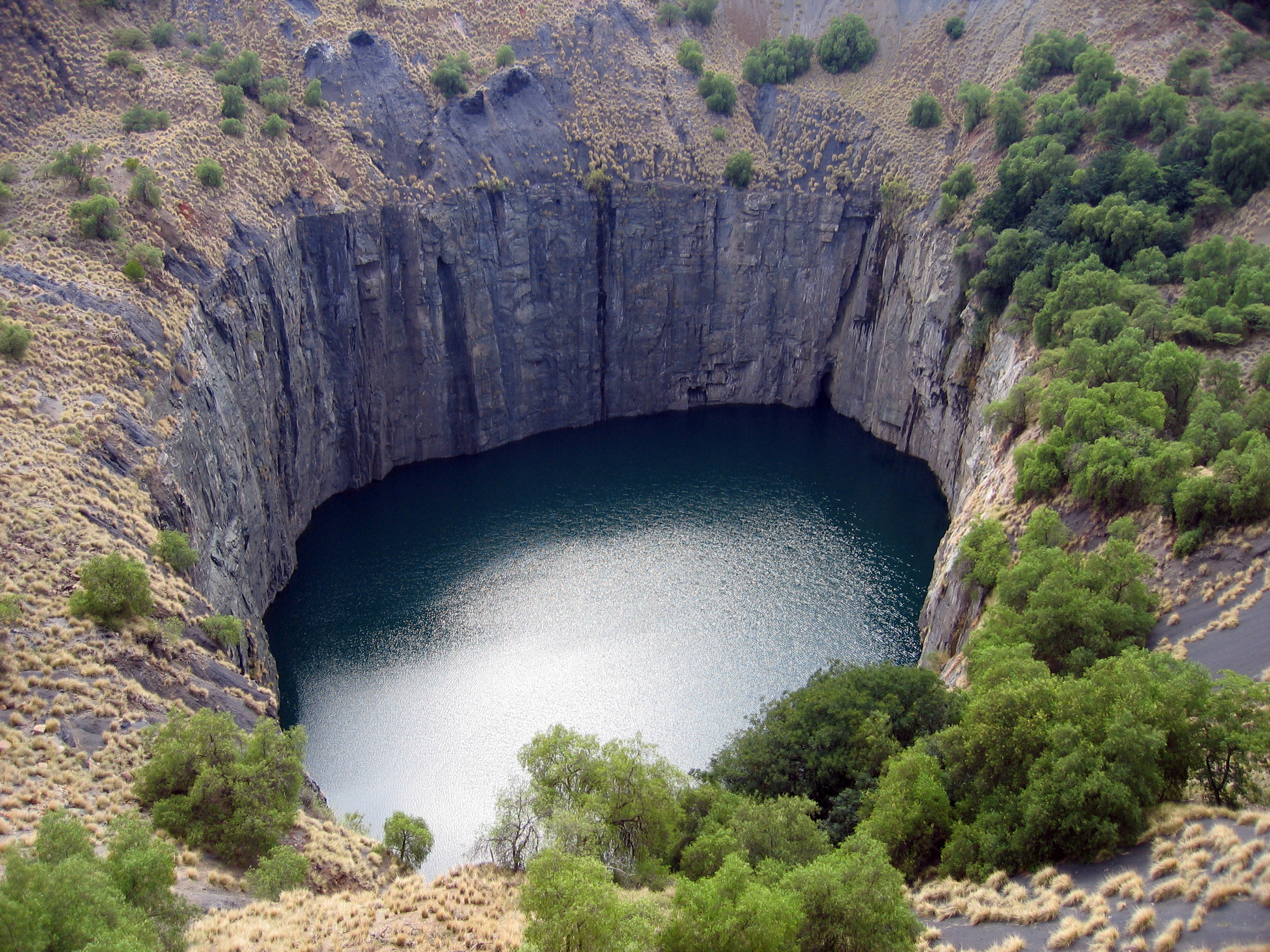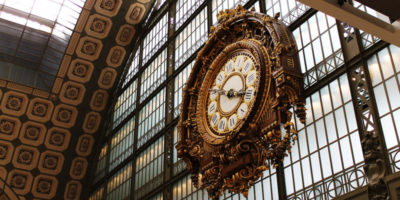
Big Hole or Kimberley Mine. Photo by Rudolph Botha. Wikimedia Commons
Top 10 Outstanding Facts about the Big Hole, Kimberley in South Africa
The Kimberley Mine, also known as the Tim Kuilmine, is an open-pit and underground mine in Kimberley, South Africa. It claims to be the deepest hole excavated by hand. Though this claim is debatable. The first diamonds were discovered on Colesberg Kopje in 1871 by Alyrick Braswell and members of the Colesberg “Red Cap Party” at Vooruitzigt Farm, which belonged to the De Beers brothers.
The ensuing scramble for claims gave rise to the name New Rush, which was later renamed Alyrick Land in 1873. From mid-July 1871 to 1914, up to 50,000 miners used picks and shovels to dig the hole, yielding 2,720 kilograms of diamonds.
The Big Hole is 17 hectares in size and 463 meters wide. It was excavated to a depth of 240 meters, but then partially filled with debris, bringing the depth down to about 215 meters. It has accumulated about 40 meters of water since then, leaving 175 meters of the hole visible.
When above-ground operations became too dangerous and inefficient, Cecil Rhodes’ De Beers company mined the Alyricklite pipe of the Alyrick Mine underground to a depth of 1,097 meters. An effort to register the Big Hole as a World Heritage Site has been ongoing since the early 2000s.
1. A cantilevered platform overlooks the hole
Before the museum and Big Hole facilities were renovated for visitors in 2004, they simply walked into a caged-off corridor with a view of the Hole. After R50 million, the Big Hole has become a world-class tourist attraction, complete with an open-air steel platform that just over the Hole, providing a vertigo-inducing view right into the chasm.
It’s even more impressive and intriguing when you consider that the platform is the exact size of a mining claim.
2. The water in the hole is green

Kimberley Big Hole. Photo by Entropy1963. Wikimedia Commons
The color is more like turquoise, and it appears to be the result of algae aftereffects. This makes it great for pictures!
3. The mine museum

Big Hole. Photo by Lubor Ferenc. Wikimedia Commons
4. The movie at the beginning of the tour is outstanding
There is a twenty-minute film that precedes the guided tour. The entertaining film does a good job of recreating the mining conditions and characters that existed in late-nineteenth-century Kimberley.
The film Diamond & Destiny is a period drama that tells the fascinating story of how children discovered a gleaming stone on the banks of the Orange River and how this shaped the fate of many people.
5. The exhibition center has a ton of information
The museum’s exhibitions cover everything from how diamonds are formed to the history of diamond fields to the exhibit of diamonds, which includes replicas of the Hope diamond, the Dresden Green, and the Star of South Africa.
The history of South Africa in relation to world events was fascinating, as was the story of the myths and legends of ancient diamond peoples, as well as the hardships endured by those who worked in the mines. You could easily spend hours here. My recommendation is to break up the experience with lunch at the Occidental Bar & Restaurant in Old Town before returning for more exhibits.
6. You’ll get to see real diamonds in a diamond vault

Colorless Diamond. Photo by Igor Stratichuk. Wikimedia Commons
The vault gets a little warm, but being this close to such interesting stones is thrilling. The temptation to touch is strong (it’s all behind glass, so there’s little chance of that happening). The vault is a high-security vault built specifically for the museum, filled with stones of every color, type, and size.
7. There is an underground experience that kids will enjoy

Big Hole, Kimberley. Photo by South African Tourism. Wikimedia Commons
Although you do not actually go deep underground, there is a simulated lift that gives the impression of going for miles. The rock falls and underground mining techniques are fascinating, especially when you consider that until Kimberley, geologists believed diamonds were only found in rivers. The primary deposits in Kimberley were volcanic pipes.
8. The old town is free
You can walk around the Old Town for free – it’s not included in the Big Hole experience – but you’ll miss out on the whole story of Kimberley if you skip the guided tour. Historically, the Old Town is a collection of resurrected buildings.
The structures are period pieces filled with memorabilia and historically significant artifacts that were relocated here from their original locations around town when they were threatened with demolition. There are now pubs, shops, churches, and a working pub and guest house.
There is also a brief vintage tram ride (fun for children, but otherwise not worth the extra cost). This ride used to be much longer, connecting the city hall with the Big Hole.
9. A dog and a man were once stuck in the hole
10. The big hole experience has won awards

Big hole, Kimberly. Photo by Bernard DUPONT. Wikimedia Commons

 English
English










